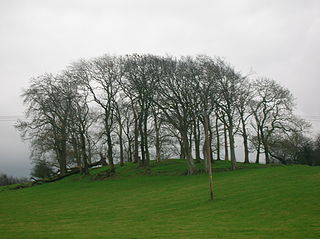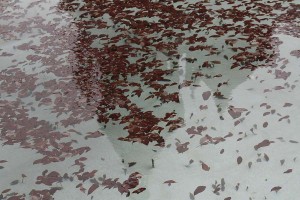A trip to Dallas gives you the opportunity to visit the Sixth Floor Museum, an institution that “chronicles the assassination and legacy of President John F. Kennedy; interprets the Dealey Plaza National Historical Landmark District and the John F. Kennedy Memorial Plaza; and presents contemporary culture within the context of presidential history.”
Whenever anyone hears about the place, the initial reaction is something like “ooh, creepy.” But the thing is done so simply and respectfully that it’s worth fighting the ick factor.
The museum–no interior photography allowed, sorry–builds a narrative that leads up to and recedes from a re-creation of the sniper’s nest on the sixth floor of what was back then the Texas Book Depository building. From the outside, immediately below the cornice, there on the right, you can see the infamous partially-open window.
Down below there’s an embankment planted with grass, the “grassy knoll” that figures in some scenarios as the location of a possible second gunman.
It’s also the location of a big banner screaming “Grassy Knoll” in case you didn’t figure what it is.
Planting a big banner on an embankment doesn’t make it any more of knoll, however. From my imperfect understanding of landscape terms a knoll is a gentle bump on a flattish landscape. (There might be sheep nearby.) This instead is a grassy embankment beside a road that feeds into a highway. This is not a knoll.
This, however, is a knoll, and quite a grassy one at that. (Image by Rosser1954 at the Wikimedia Commons.)
On the pavement right in front of the G.K., you can see one of the two white X’s that mark the locations of the limousine when it was struck by gunfire. It’s probably the most tacky or mawkish thing you’ll see on your visit.
Down on the plaza you can look up to the open window, across to the “knoll,” or down into a big water feature filled with winter leaves moving slowly in the breeze-driven water currents. You can trance out to the little epicycles that the leaves take through the water, or you can try to ignore traffic and reflect quietly on the events that took place here fifty years ago.
I’d guess that most Dallas residents aren’t so thrilled for being known for living in the city that killed JFK. But this is history, and I’m glad I came to pay my respects.








Last weekend, I was looking at photos of Geoffrey Jellicoe’s JFK memorial at Runnymeade in the UK. It’s an extraordinarily well designed and thoughtful place, or so I read. Apparently very different from the sight show in Dalls. X’s on the pavement? Like TV crime drama. Yes, I’m being critical. But thanks for this thoughtful report on your visit.
Interesting points…I guess it isn’t a knoll. But maybe it was a knoll, before the newer structure and fencing / wall was built at the top?
What I’m almost certain of is that those trees are either Quercus virginiana or Q. fusiformis!
History is history, and at least Dallas is owning up to its day of infamy. These places, like Thoreau’s cabin site at Walden and Emily Dickinson’s grave in Concord, exert a surprising power, don’t you think?
The rest of the historical interpretive information sounds fine, but the Grassy Knoll banner is, for me, surreal.
And it makes me want to launch a project with you where we go around and make banners for all the geomorphological and designed forms we find: esker, graben, thalweg, horst, arroyo, bosque, quincunx, etc.
James, the carnival down on Dealey Plaza and the museum itself seem of entirely different worlds. Upstairs, very hushed and old-school, a museum with a serious mission. Down below, anything goes. The site cries for a proper memorial. Maybe Dallas isn’t the place for it. Maybe it’s been realized at Runnymede, on that acre of land ceded to the Americans.
David, I don’t know my oaks, but I’m glad that you do! I was really struck by their extreme glaucous foliage. The fence goes back to before that November day and hides train tracks on the other side, along with flat land–and certainly no sheep!
Ricki, I agree. Place can exert an amazing and surprising force when it pairs up with history. The more ordinary places–like Dealey Plaza–seem to work so well for this, where you sense the possibility of a huge crash of history coming down on an otherwise very plain location.
Maggie, how many times do you get to use the word “thalweg” in ordinary conversation? (Glad to give you that opportunity.) A banner explaining, nay, PROCLAIMING it would be amazing!